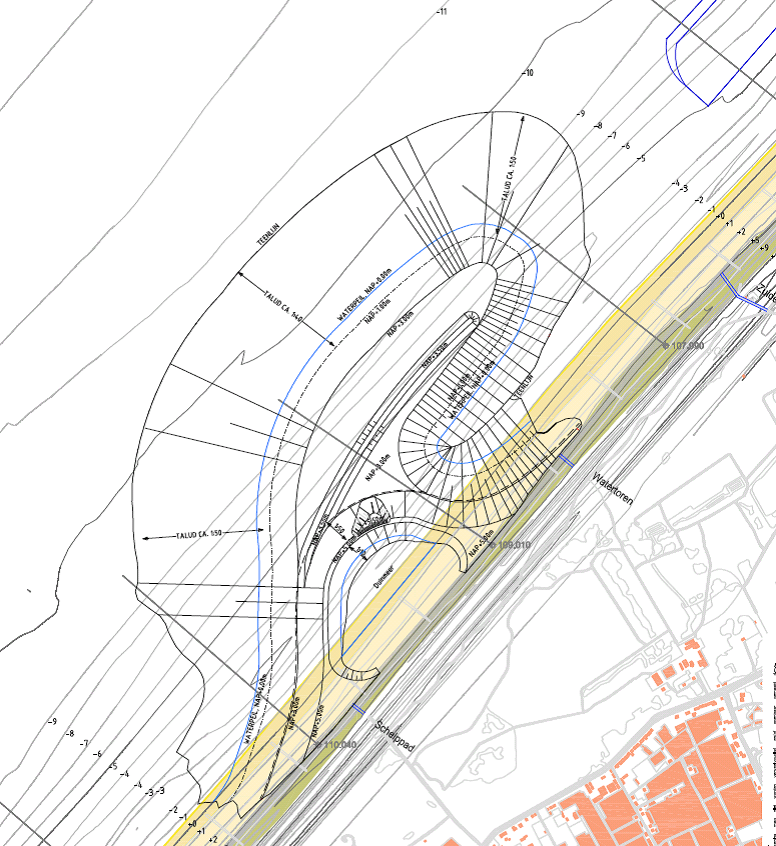Construction
In 2010 an international tender took place, which was won by the consortium of Boskalis and Van Oord. Construction started in March 2011.
Detailed design
After selecting the location (the Solleveld reach, a natural dune area in between the recreational beach areas of Kijkduin in the North and of Ter Heijde in the South) and the shape (hook-shaped peninsula), the dimensions of the Sand Motor were determined.
The peninsula extends 1 km into the sea, and has a longshore dimension of 2 km. Its maximum level is 5 m above chart datum (NAP), which means that part of the surface remains above sea level even under storm conditions. A total amount of 21,5 million m3 of sand was nourished, of which 19 million in the Sand Motor proper. The other 2,5 million m3 were placed in two foreshore nourishments, one at each side. These two foreshore nourishments will serve the parts of the coast to which redistribution of sands from the Sand Motor will not contribute in the initial few years.
Construction design

The 19 million m3 of sand created an emerged area of initially 100 ha. The main part of the nourishment is within the active zone (which on this coast, is down to the 10 to 12 m depth contour), i.e. that part of the foreshore where wave-induced sand movement is most active. After redistribution of the sand, eventually the Sand Motor is expected to generate a total of 35 ha of new dunes.
In the base of the peninsula a 8 ha lake was created. Apart from creating extra morphological and ecological variation, this lake contributes to maintaining the original groundwater level in the existing dune area, thus safeguarding conditions for the commercially exploited groundwater reservoir in the Solleveld reserve behind the dunes.
In a late stage, some (initially underestimated) potential problems appeared related to the commercial drinking water exploitation in the Solleveld dune area. Generally speaking, the gradual extension of the dune area induced by the Sand Motor will increase the fresh water reservoir of the dunes, which at first sight is positive for drinking water exploitation in the longer run. Yet, the very specific conditions at Solleveld made this to be problematic, as in the existing dunes north of the Sand Motor an amount of polluted rubble was dumped and buried after the war. Widening of the dunes will lead to a seaward expansion of the exploited watershed and may bring it into contact with the polluted rubble. In order to prevent this, a system of groundwater pumps was installed around the polluted area, in order to artificially lower the groundwater table and to prevent groundwater flow from the polluted area into the exploited watershed (for more information see this video – Dutch spoken).
Project delivery
In November 2011 the total of 21.5 million cubic meters of sand had been dredged and put in place. The Sand Motor was officially opened on November 24th, 2011.
Governance
Before construction started slight adjustments were made to the position of the Sand Motor, based on discussions with the municipalities of Westland and The Hague. This resulted in a slight northward shift of the location, such that the Sand Motor is located in both municipalities. They agreed, however, that the management of the entire Sand Motor will be in the hands of the municipality of Westland.
During construction regular management and user meeting were organized to inform the stakeholders. To ensure swimmer and beach safety the lifeguard was closely involved and organized information meetings.
